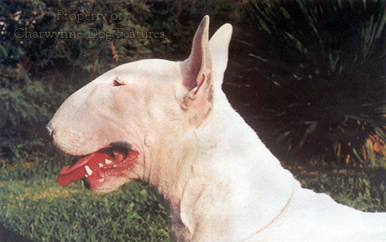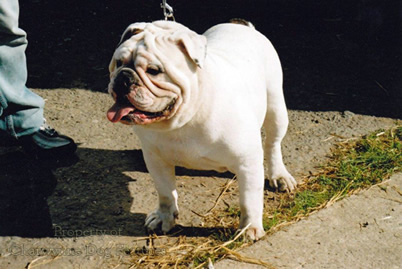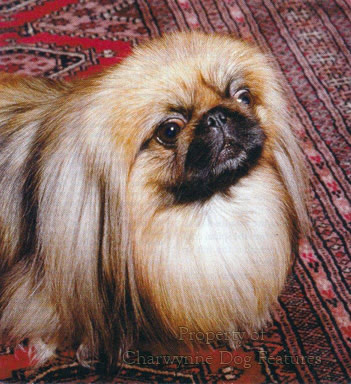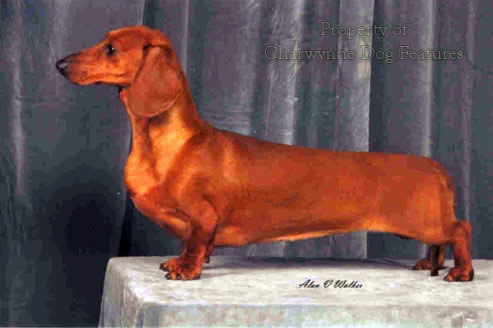736 DAMAGE BY DESIGN
DAMAGE BY DESIGN
by David Hancock

 Now that breed health, breed purity and instructions to show ring judges are all receiving much merited attention, there is one extremely important aspect of pedigree dog breeding and showing which deserves attention. It would be sad if we lost breeds to perpetual and prolonged inbreeding, more than regrettable if we lost breeds to rogue genes and monstrous if judges rewarded exhibits displaying harmful exaggerations. But sad, regrettable and monstrous too if our precious breeds are bred to the wrong template; the show ring has changed a number of breeds, not for the better; fashion, fad and pressure from influential kennels can impose a changed type on a breed. Gradual changes, viewed initially as slight exaggerations, develop into bigger ones, reactions to docking in breeds not previously docked and ‘the fashion of the day’ can all contribute to the classic fundamental type in a distinctive breed being reshaped. This reshaping can be whimsical in origin, untraditional in effect, even harmful in its manifestation, but as time passes, can become acceptable. Damage by design causes as much discomfort and distress to dogs as many health problems.
Now that breed health, breed purity and instructions to show ring judges are all receiving much merited attention, there is one extremely important aspect of pedigree dog breeding and showing which deserves attention. It would be sad if we lost breeds to perpetual and prolonged inbreeding, more than regrettable if we lost breeds to rogue genes and monstrous if judges rewarded exhibits displaying harmful exaggerations. But sad, regrettable and monstrous too if our precious breeds are bred to the wrong template; the show ring has changed a number of breeds, not for the better; fashion, fad and pressure from influential kennels can impose a changed type on a breed. Gradual changes, viewed initially as slight exaggerations, develop into bigger ones, reactions to docking in breeds not previously docked and ‘the fashion of the day’ can all contribute to the classic fundamental type in a distinctive breed being reshaped. This reshaping can be whimsical in origin, untraditional in effect, even harmful in its manifestation, but as time passes, can become acceptable. Damage by design causes as much discomfort and distress to dogs as many health problems.

The shape of a breed, its physical form or morphology, should result from its functional design, be protected by its breed standard, guarded by its breed clubs and treasured across the generations of breed devotees as its unique identity. But all too often breed points become breed exaggerations as close breeding overplays its hand. In this way, long ears become ground-draggers, short legs become castors, long spines become centipedal, long coats become overcoats, slack eyelids become dustpans and short muzzles become dental and respiratory handicaps. It is easy to argue that the Kennel Club should be overseeing breed-continuation or protecting the morphological integrity of a breed, if only on health grounds. But the first stop is surely the breed clubs; the KC should look over their shoulders and may have failed to do so. But that shouldn’t let breed clubs off the hook. Who allowed the Bull Terrier to acquire an egg-shaped head? How did the Bulldog achieve a muzzle-less head? What permitted the GSD to lose its topline and rear assembly? Who allowed the Mastiff to become valued solely for its bulk? Who was supervising the well-being of dog breeds when this was being inflicted?

Who decides the form of the Pekingese’s skull? Who advises on the jaw-length of a healthier Bulldog? How high off the ground should the Basset Hound’s torso be? What is unacceptably long in the length of a Dachshund’s spine? Who will prevent the Bull Terrier’s skull from becoming spherical? Who decides the weight of a Mastiff, a breed council, or, one day, an animal rights group! There is a clear need for an OFMORPH, an official to monitor shape, an inspector of canine morphology! But who would he be, how would he operate and with whose authority? No one person could have all the skills involved, it would need a combination of canine historian, veterinary anatomist and functional advisor to work on the morphology of each subject breed for the betterment of that breed. More interference in breed business? Greater outside intrusion in breed matters? Even more bureaucracy for breeders and breeds to cope with? Truly there are greater dangers in not having such a person; untraditional and harmful alterations have already been made to our precious breeds.

The physical form or morphology of each breed of pedigree breed really needs safeguarding, it can preserve true type, it can restore functional type, it can achieve a healthier breed. A morphologist could ensure that a breed standard contributes to the health of that breed. Photography too has given us a simply marvellous tool in the conservation of true type in dogs. Of course each breed changes subtly as the years go by, but truly who wants a breed to change its appearance fundamentally ~ only those not skilful enough to breed to the standard or more wallet-led than honest. Historic photographs can show you what you don’t want in a breed.
The Bateson Inquiry into pedigree dog breeding in Britain considered such an aspect, recording in its recommendations the need ‘to avoid extremes of conformation that create welfare problems’. An informed morphologist would soon spot a Basset which was no longer a hunting dog and a Clumber which was no longer a sporting spaniel. A Mastiff weighing 20 stones is no longer a heavy hound, just a warm-blooded obstacle. A Dachshund with its keel on the ground is no longer an earthdog, just an animated draught-excluder. These are ancient breeds, quite admirable breeds deserving of both our compassion and our best endeavours, not grumpy opposition based on contemporary lazy thinking. The Kennel Club may actually be better placed to monitor design flaws than the Department for the Environment, Food and Rural Affairs or DEFRA, as Bateson recommended. The KC appoints judges and publishes breed standards. Making them responsible for harmful breed design, actionable in the courts, could work wonders. When those in authority create welfare problems, the first resort should always be the firm insistence that it is they who must remedy their neglect and accept responsibility for remedying the sad situation created in fact by them. New bodies take time to achieve results; the design of quite a number of our dog breeds urgently requires reshaping; make the KC right their wrongs! Pressure them into accepting responsibility!